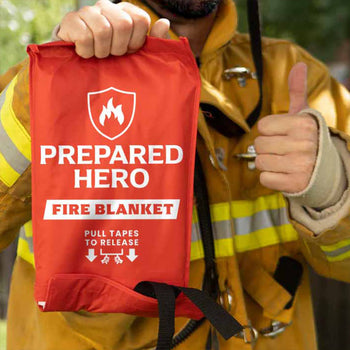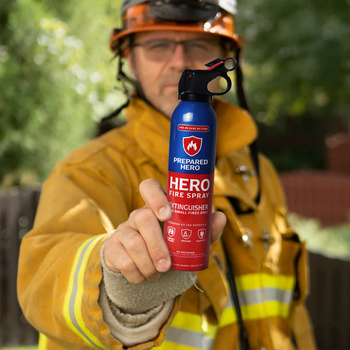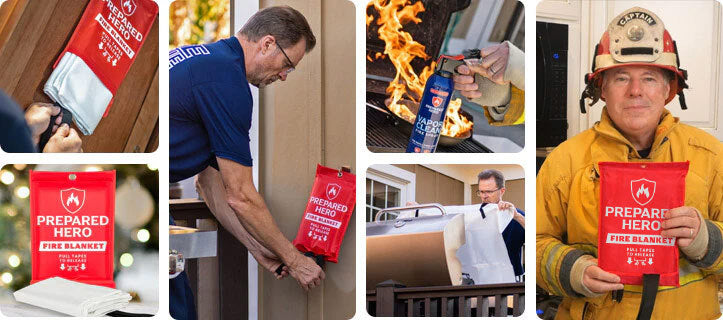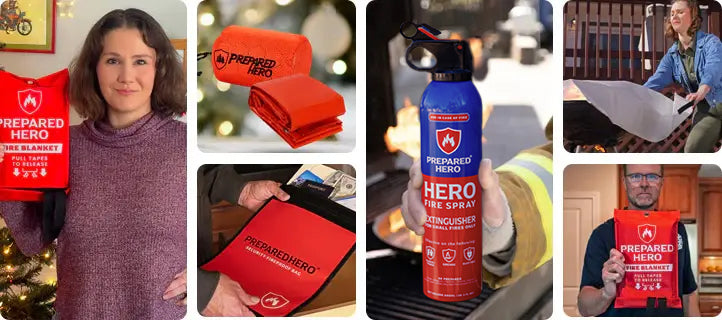Where you put your smoke detectors matters just as much as installing them. Proper placement makes sure they can detect...
Firesafing and fire-stopping are two primary forms of passive fire protection. They generally prevent fire by sealing joints and covering openings with fire-resistant materials.
Knowing the differences helps you choose the right way to prevent fire on your property. It also helps prevent injuries and death.
So what's exactly the difference between firesafing and fire-stopping? Let's find out.
What Is Firesafing?

Contrary to popular belief, firesafing and fire-stopping are two different things. Firesafing doesn't have hourly ratings, while fire-stopping systems have.
Generally speaking, firesafing refers to the products used for fire-stopping. In other words, it describes the insulating material typically used in fire-resistant joints. Hence, firesafing is just one of the steps to complete a fire stop assembly.
Also known as safing insulation, firesafing usually involves mineral wool. The material is designed to enhance fire protection in residential and commercial buildings. Mainly used as a backing material for firestop sealants and caulks, firesafing has many applications.
In particular, firesafing works for floors, walls, perimeter fire containment systems, joints, and other fire-stopping applications.
Specifically engineered and produced for fire-stopping assemblies, firesafing can be used for the following:
- Perimeter gaps between exterior walls and concrete floor slabs
- Around duct openings and conduit pipes through slabs and walls
- Between ceiling slabs and firewalls
Many firesafing materials feature fire prevention properties like the following:
- High melting temperature
- Low thermal conductivity
- Minimal shrinkage
- Moisture-resistant
- Mildew-resistant
- Fungi-resistant
- Vermin-resistant
- Smoke-resistant
- Non-corrosive
When used with other fire prevention products like fire extinguisher types, kitchen fire suppression systems, and fire sprinkler systems, firesafing keeps your family safe. When installed in a commercial or industrial building, firesafing also helps protect the personnel and the public.
What Is Fire-Stopping?

Fire-stopping refers to the complete, tested assembly for joints and penetrations. The process includes walls, perimeters, and floors. Additionally, the assembly consists of one or more materials (e.g., firesafing).
Unlike firesafing, fire-stopping systems have hourly ratings determined by testing. Materials (i.e., firesafing) don't get hourly ratings.
However, materials can have fire-resistant ratings. The same material may have different ratings based on the size, the penetrating item's material, and the material being penetrated (e.g., concrete, gypsum board on wood framing, masonry).
To further explain fire-stopping, imagine a building as a single unit with several rooms. Since a fire can start in any room, you must prevent that fire from spreading to the rest of the house.
Doing this lets people evacuate. It also gives time for emergency response teams to get to the building.
Additionally, fire-stopping seals any points where a fire can pass through. These points include wall-to-ceiling joints, wall-to-wall connections, and wall-to-floor joints.
Fire-stopping also prevents the spread of smoke and other harmful gasses through the said points. As a result, it helps decrease property damage and personal injury.
In particular, fire-stopping is used in the following:
- Electrical, mechanical, and structural penetrations
- Re-entries of existing firestops
- Control or sway joints in fire-resistant walls or floors
- Unpenetrated openings (including openings for future use)
- Junctions between fire-resistant walls or floors
- Head-of-wall joints
What Is Fireproofing?

Now that we covered firesafing and fire-stopping, let's talk about another common term: fireproofing.
Contrary to popular belief, fireproofing and fire-stopping are different terms.
Fire-stopping prevents the spread of fire, smoke, and other harmful gasses throughout your house or building. On the other hand, fireproofing protects your home to prevent collapse that can lead to a structure fire.
Given this, builders or specialists commonly fireproof steel and concrete during construction. They usually do this by applying fireproof sealant. Specialists can also fireproof electrical circuits, fuel tanks, and fire barriers.
When a fire breaks out, materials can reach highly unsafe temperatures. Overheated steel weakens and collapses. Additionally, overheated concrete expands and bursts if the moisture inside becomes too hot.
These things can lead to exploding concrete walls that quickly weaken your building's structure and cause danger to everyone in the vicinity.
Additionally, fireproofing is crucial for many reasons. For one, it helps preserve your building's structural integrity for an extended period during a fire. Just like fire-stopping, it gives people more time to evacuate.
Fireproofing also allows first responders to safely enter your house or building and put out the fire. As firefighters put out the fire, fireproofing prevents your building from collapsing. This decreases property damage and prevents personal injuries.
Firesafing vs. Fire-Stopping vs. Fireproofing
Firesafing, fire-stopping, and fireproofing may sound the same, but they're different.
Here's a table summarizing the differences between firesafing, fire-stopping, and fireproofing:
| Firesafing | Fire-Stopping | Fireproofing | |
| Definition | Products used for fire-stopping | Complete, tested assembly for joints and penetrations |
Structural protection for fires |
| Rating | No rating | Hourly rating | Fire-resistance rating |
| Purpose | To insulate | To prevent fire from spreading | To protect the structural integrity |
How About Using a Fireproof Bag?

In the past, you could fireproof your house but not your valuables.
Thanks to innovation, you can now keep your valuables― jewelry, documents, keepsakes, and cash― safe.
Introducing the Prepared Hero Fireproof Bag: your all-in-one valuables protector. This bag protects what matters to you from any type of fire.
You can also easily see it at night, making it quick to locate when a fire breaks out.
Plus, this wonderful bag is fire-captain-approved. If a fire captain trusts it, so should you.
Simply put your valuables inside, seal the bag shut, and store it in an easy-to-remember location.
Get peace of mind knowing you and your family's most precious valuables are kept safe in an emergency fire scenario.
Frequently Asked Questions
Is fireproofing same as firestopping?
No, fireproofing is not the same as firestopping. Fireproofing protects the structure of a building, while firestopping prevents fire from spreading to other areas. Plus, fireproofing is done during construction on concrete and steel. On the other hand, firestopping involves joints and penetrations (e.g., walls and floors).
What is safing used for?
Safing is used for protecting floors, walls, joints, and perimeter fire containment systems. Also known as safing insulation, safing usually involves mineral wool.
What is joint firestopping?
Joint firestopping prevents flame and smoke from spreading through joints in a building. It helps protect a building from damage and its occupants from injuries.
What is mineral wool safing?
Mineral wool safing uses mineral wool to prevent flames and smoke from passing through openings in buildings. The mineral wool also helps seal openings when installed between floor slabs and spandrel panels.
What is the difference between fireproofing and firestopping?
Fireproofing protects the structural integrity of a building, while firestopping prevents the spread of fire and harmful gases throughout a building. Fireproofing is usually done on concrete and steel during construction, while firestopping involves joints and penetrations.
Is mineral wool fire blocking?
Yes, mineral wool block fire. The high-density fibers in mineral wool prevent fire from spreading and decrease noise between interior walls, ceilings, and floors.
Conclusion

Firesafing, fire-stopping, and fireproofing may sound interchangeable, but they're not. Knowing the differences between the three helps you choose the best way to prevent fire on your property.
Aside from firesafing, fire-stopping, and fireproofing your house, you can also put up a fire kit with an emergency fire blanket, fire spray, and fire protection gloves.
So, what are you waiting for? Go to Prepared Hero and shop for fire safety tools now!


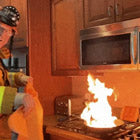 Fire
Fire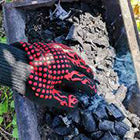 Safety
Safety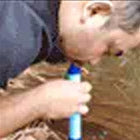 Survival
Survival Protection
Protection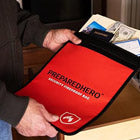 New
New Scouting America
Scouting America
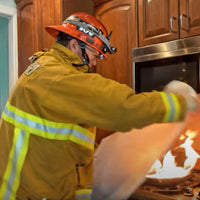 Fire
Fire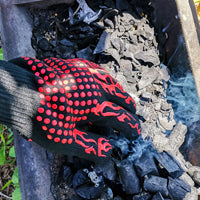 Safety
Safety Survival
Survival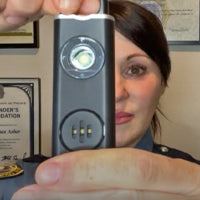 Protection
Protection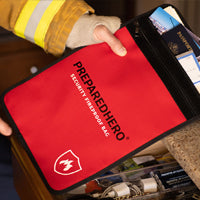 New
New
